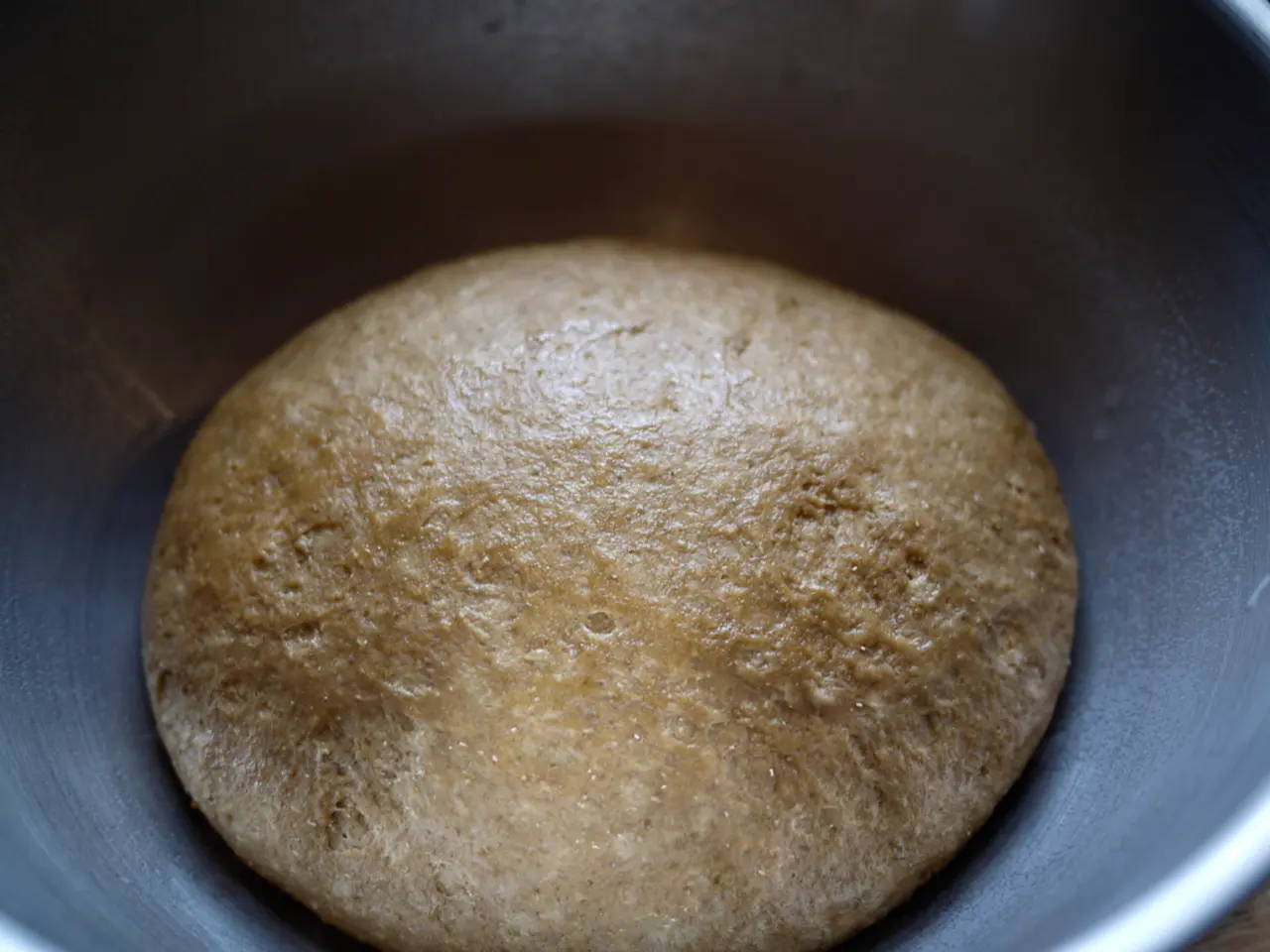Grains market sees wheat prices falling towards Friday's closing figure.
The USDA's latest Flour Milling report indicates that wheat ground for flour in the April-June quarter totaled 222.94 million bushels (mbu) of wheat [1]. Meanwhile, the wheat market has been bearish, with prices declining recently due to mixed harvest results and global factors pressuring the market.
On July 31, 2025, the September 2025 CBOT wheat futures opened at about $5.23¾ per bushel, after a 6-cent decline from the previous day. By August 1, 2025, the price dropped further to around $5.17¾, reflecting a 1.24% drop from the previous day and a downward trend over the month (-8.38%) and year (-4.13%) [2][3].
In the Kansas City HRW (Hard Red Winter) contracts, September lost 7 3⁄4 cents this week, while Kansas City HRW contracts were 6 to 7 1⁄2 cents lower [1]. Similarly, Minneapolis spring wheat saw losses of 4 to 6 cents across the front months, with September losing 12 1⁄2 cents on the week [1].
The wheat complex experienced a decline over the weekend, with all three markets closing in the red. On August 1, the Sep 25 CBOT Wheat closed at $5.16 3/4, down 6 1/2 cents, while the Dec 25 CBOT Wheat closed at $5.37, down 5 1/2 cents [2]. The Sep 25 KCBT Wheat closed at $5.18 3/4, down 7 1/2 cents, and the Sep 25 MGEX Wheat closed at $5.72 1/4, down 5 1/2 cents [2].
In addition, Sovecon trimmed their Russian wheat crop estimate by a slight margin, from 83.6 MMT to 83.3 MMT [1]. Sovecon also reduced their Ukraine wheat estimate by 2.8 MMT to 19.8 MMT [1].
The total number of contracts added to the spec fund net short position in CBT wheat was 13,283 as of Tuesday, taking it to 65,324 contracts net short [1]. This indicates a growing bearish sentiment among investors.
However, some positive news comes from Bangladesh’s unexpected purchase of U.S. wheat to reduce tariff tensions, which has provided some cautious optimism [1][4].
As of early August 2025, the current price for CBOT September 2025 wheat futures is roughly $5.18 per bushel, with a downward price trend driven by harvest variability and global supply-demand factors [1][2][3]. The overall sentiment remains fragile for the Chicago soft red winter wheat futures [1][4].
[1] Source: Reuters [2] Source: Investing.com [3] Source: MarketWatch [4] Source: Farm Futures
Given the current circumstances in the wheat market, businesses in the energy and finance sectors might be re-evaluating their investing strategies in the industry, considering the downward trend in wheat prices both monthly and yearly as per CBOT wheat futures. The recent bearish sentiment among investors, as indicated by the growing net short position in CBT wheat, could potentially sway the overall economic outlook for agriculture-related businesses.




